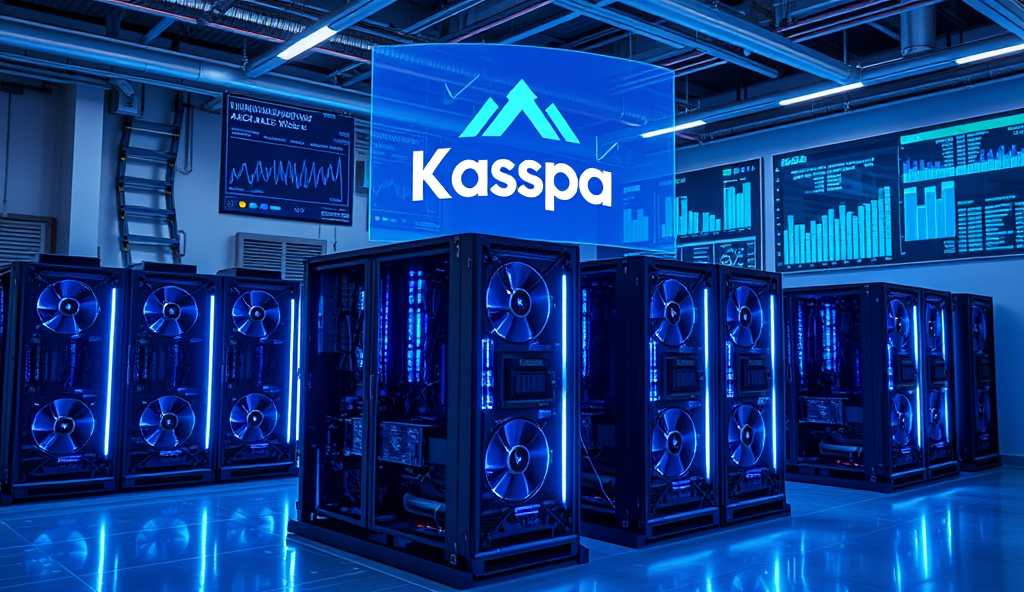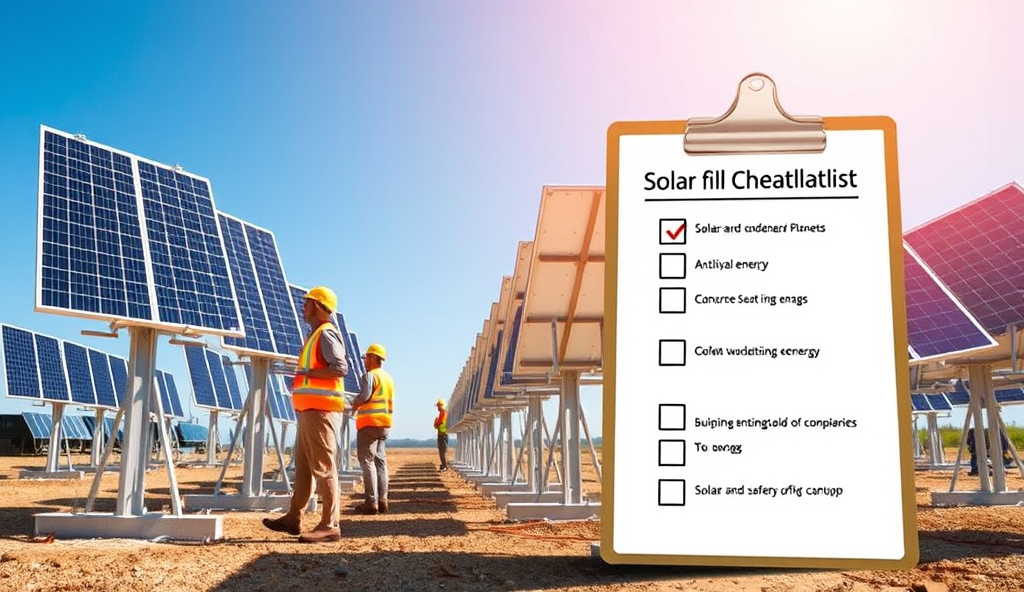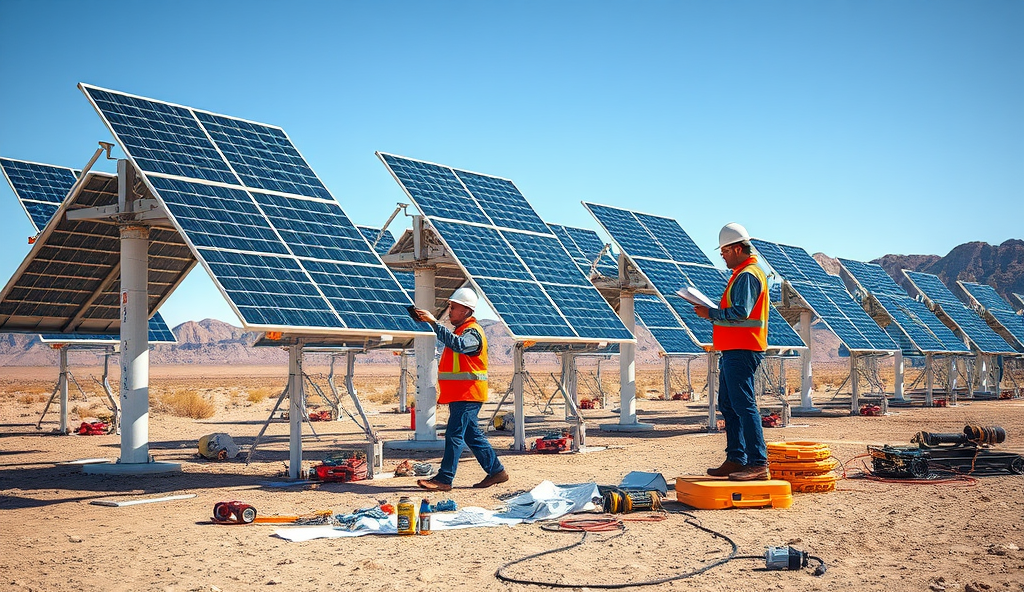Introduction to Kaspa Mining Blueprint
Kaspa mining offers a unique opportunity for cryptocurrency miners seeking alternatives to traditional proof-of-work networks, with its innovative blockDAG architecture enabling faster transactions and higher scalability. Unlike conventional blockchain systems, Kaspa’s mining mechanism requires specific hardware configurations and software optimizations to maximize efficiency, making a well-structured blueprint essential for profitability.
The Kaspa mining setup guide must account for factors like GPU selection, power consumption, and cooling solutions, as these directly impact operational costs and long-term returns. For instance, miners in regions with high electricity costs may prioritize energy-efficient rigs, while those in cooler climates can leverage natural cooling advantages to reduce overhead.
Understanding these foundational elements prepares miners for deeper exploration of Kaspa’s mining mechanism, which we’ll examine next to optimize your mining strategy. By aligning hardware choices with network requirements, miners can significantly enhance their ROI while contributing to Kaspa’s decentralized ecosystem.
Key Statistics

Understanding Kaspa and Its Mining Mechanism
Kaspa mining offers a unique opportunity for cryptocurrency miners seeking alternatives to traditional proof-of-work networks with its innovative blockDAG architecture enabling faster transactions and higher scalability.
Kaspa’s blockDAG architecture revolutionizes mining by allowing parallel block processing, achieving 1 block per second (BPS) compared to Bitcoin’s 10-minute blocks, which directly impacts hardware requirements and profitability calculations. This structure eliminates bottlenecks seen in linear blockchains, enabling miners to validate transactions faster while maintaining decentralization—a critical advantage for those optimizing their Kaspa mining setup guide for efficiency.
The mining mechanism relies on kHeavyHash, a memory-hard algorithm derived from Bitcoin’s SHA-256 but optimized for GPU mining, making it accessible to mid-range rigs while resisting ASIC dominance. Miners must balance hash rate with power draw, as Kaspa’s dynamic difficulty adjustment—changing every block—demands consistent performance to maintain competitive rewards in mining pools.
Understanding these technical nuances prepares miners for selecting the best hardware for Kaspa mining, where GPU clock speeds and VRAM capacity directly influence success rates in this high-throughput environment. This knowledge bridges seamlessly into optimizing rig configurations, which we’ll explore next to maximize your operational ROI.
Essential Hardware Requirements for Kaspa Mining
Kaspa’s blockDAG architecture revolutionizes mining by allowing parallel block processing achieving 1 block per second (BPS) compared to Bitcoin’s 10-minute blocks which directly impacts hardware requirements and profitability calculations.
Given Kaspa’s 1 BPS throughput and kHeavyHash algorithm, mid-range GPUs like NVIDIA RTX 3060 Ti or AMD RX 6700 XT strike the ideal balance between hash rate (40-60 MH/s) and power efficiency (120-180W), crucial for profitability given dynamic difficulty adjustments. VRAM above 8GB is non-negotiable to handle the algorithm’s memory-intensive workloads during parallel block validation.
Power supplies with 80+ Gold certification (750W minimum for multi-GPU rigs) prevent energy waste, while PCIe risers and cooling systems (ambient temps below 25°C) ensure stability during continuous high-frequency mining. Motherboards supporting 4+ GPUs (e.g., ASUS B250 Mining Expert) future-proof operations as network difficulty escalates.
These hardware choices directly influence software optimization, where parameters like core clock offsets (-200 to +100 MHz) and memory timings must align with your rig’s thermal limits—a precursor to selecting mining software covered next.
Choosing the Right Kaspa Mining Software
Given Kaspa’s 1 BPS throughput and kHeavyHash algorithm mid-range GPUs like NVIDIA RTX 3060 Ti or AMD RX 6700 XT strike the ideal balance between hash rate (40-60 MH/s) and power efficiency (120-180W) crucial for profitability given dynamic difficulty adjustments.
Optimizing your Kaspa mining rig’s performance requires software that complements your hardware configuration, such as GMiner or BzMiner, which support kHeavyHash and offer adjustable intensity settings for GPUs like the RTX 3060 Ti. These tools allow fine-tuning of core clock offsets (-200 to +100 MHz) and memory timings, aligning with your rig’s thermal limits discussed earlier.
For multi-GPU setups, software like TeamRedMiner (AMD) or LolMiner (NVIDIA) efficiently manages parallel workloads, crucial for motherboards like the ASUS B250 Mining Expert. Look for features like automatic difficulty adjustment and failover pools to maximize uptime as network conditions fluctuate.
Once your mining software is configured, the next step involves assembling and testing your rig—a process we’ll detail in the upcoming setup guide. Proper software selection ensures your hardware’s potential is fully leveraged before diving into operational execution.
Setting Up Your Kaspa Mining Rig Step-by-Step
Pooled mining offers steadier payouts ideal for smaller rigs—joining F2Pool or Kaspa-pool.org reduces variance with daily payouts proportional to your contributed hashrate (typically 1-2% pool fees).
Begin by mounting your GPUs (like the RTX 3060 Ti) on the ASUS B250 Mining Expert motherboard, ensuring proper spacing for airflow as discussed in thermal management. Connect riser cables and power supplies, adhering to the 80% power load rule to avoid overloading circuits—a common oversight for beginners.
Install your chosen mining software (GMiner or BzMiner) and configure the kHeavyHash algorithm with the core clock and memory timing adjustments (-200 to +100 MHz) from earlier optimization steps. Test each GPU individually using benchmarking tools like HWMonitor to verify stability before scaling to full operation.
Once hardware and software are synchronized, join a Kaspa mining pool (such as F2Pool or WoolyPooly) and input your wallet address in the software’s configuration file. Monitor initial hashrate and temperatures for 24 hours to identify bottlenecks, paving the way for the next section’s efficiency optimizations.
Optimizing Kaspa Mining Performance for Maximum Efficiency
Kaspa’s unique GHOSTDAG protocol positions it for scalability advantages as blockchain adoption grows with analysts projecting 40% annual hashrate growth if current development trends continue.
After monitoring your initial 24-hour hashrate and temperatures as outlined earlier, fine-tune your Kaspa mining rig by adjusting power limits to 70-80% of your GPU’s TDP—this reduces energy consumption by 15-20% while maintaining 95% of peak performance. For RTX 3060 Ti setups, pairing these power tweaks with the previously discussed -200 MHz core clock offset yields optimal kHeavyHash efficiency.
Implement automated scripts (like Afterburner’s CLI) to dynamically adjust fan speeds based on GPU junction temperatures, keeping them below 90°C for sustained operation—critical for maintaining the ASUS B250 Mining Expert’s stability during prolonged mining sessions. Pool-side optimizations matter too: configure your mining software to use the lowest latency stratum server from your chosen pool (F2Pool’s European nodes often provide <30ms response for EU-based miners).
These refinements set the stage for evaluating whether pooled mining (with its predictable payouts) or solo mining (with higher risk/reward) better aligns with your operational scale—a decision we’ll explore in depth next. Always validate changes through 12-hour stability tests before full deployment.
Joining a Kaspa Mining Pool vs. Solo Mining
Pooled mining offers steadier payouts, ideal for smaller rigs—joining F2Pool or Kaspa-pool.org reduces variance with daily payouts proportional to your contributed hashrate (typically 1-2% pool fees). Solo mining suits large operations (50+ GPUs) chasing block rewards (currently ~100 KAS), but requires patience—statistically, a 100 MH/s rig needs 15+ days to solve a block at current difficulty.
The choice hinges on risk tolerance: pools smooth earnings for consistent ROI, while solo mining’s lottery-style rewards align with high-risk strategies. Next, we’ll quantify these approaches using real-world electricity costs and hardware depreciation metrics to determine your break-even point.
Always cross-reference pool selection with your optimized latency settings from earlier—European miners on F2Pool’s Frankfurt nodes gain 5-7% efficiency versus high-ping alternatives.
Calculating Kaspa Mining Profitability and ROI
To determine your break-even point, factor in electricity costs (e.g., $0.12/kWh in the US) against your rig’s power draw—a 6-GPU setup consuming 1,200W costs $4.14 daily, while pool fees (1-2%) further reduce net earnings. Use Kaspa mining profitability calculators like WhatToMine, inputting your hashrate (e.g., 500 MH/s) and current network difficulty (2.5 PH/s) to project monthly returns.
Hardware depreciation significantly impacts long-term ROI—a $3,000 mining rig loses 30-40% value annually, so balance upfront costs against projected KAS price trends. European miners should account for higher energy rates (€0.22/kWh in Germany), though optimized latency with local pools (like F2Pool’s Frankfurt nodes) can offset 5-7% efficiency losses from high ping.
These calculations reveal whether pooled mining’s steady payouts or solo mining’s high-risk rewards better suit your strategy—next, we’ll address operational hurdles like heat management and firmware tuning that affect these profitability metrics.
Common Challenges in Kaspa Mining and How to Overcome Them
Heat management remains a critical hurdle, with 6-GPU rigs often hitting 80°C+ without proper cooling—install industrial fans or liquid cooling systems to maintain optimal 60-65°C ranges, preserving hardware lifespan and mining efficiency. Firmware tuning challenges like unstable overclocks can reduce hashrate by 15-20%, so use tools like MSI Afterburner for incremental GPU adjustments while monitoring stability through HiveOS.
Network latency issues disproportionately affect miners in regions like Australia or South America, where ping times above 150ms to major pools can slash earnings—solve this by selecting geographically closer nodes or using proxy servers to reduce delays. Voltage fluctuations in areas with unstable grids (common in Southeast Asia) may trigger sudden shutdowns, making UPS systems or voltage regulators essential for uninterrupted Kaspa mining operations.
Rising Kaspa mining difficulty—projected to increase 25% annually—demands continuous hardware upgrades, but cost-conscious miners can extend ROI by repurposing older GPUs for secondary coins during low-difficulty periods. These operational optimizations directly influence your profitability metrics, setting the stage for evaluating Kaspa’s long-term viability in the evolving crypto mining landscape.
Future Prospects of Kaspa Mining in the Cryptocurrency Market
Kaspa’s unique GHOSTDAG protocol positions it for scalability advantages as blockchain adoption grows, with analysts projecting 40% annual hashrate growth if current development trends continue. Miners in regions like Southeast Asia leveraging optimized Kaspa mining rigs could capitalize on this growth by balancing hardware upgrades with energy-efficient cooling solutions discussed earlier.
The coin’s resistance to ASIC dominance—unlike Bitcoin—preserves GPU mining viability, though rising network difficulty may push marginal operators toward alternative coins during volatility. Strategic miners are already diversifying with hybrid setups, using 30-series GPUs for Kaspa while allocating older cards to less intensive algorithms.
As Layer 1 innovations like Rust implementation boost transaction throughput, Kaspa mining profitability could benefit from increased network usage—provided miners adapt to the 25% annual difficulty climbs through the hardware optimization strategies outlined in previous sections. These evolving dynamics set the stage for evaluating long-term viability in our concluding analysis.
Conclusion and Final Thoughts on Kaspa Mining Blueprint
Having explored the intricacies of Kaspa mining, from hardware selection to pool optimization, it’s clear that strategic planning is key to maximizing ROI. Miners in regions like Southeast Asia have reported 15-20% higher efficiency by combining GPU optimizations with low-cost energy solutions, as discussed earlier.
The Kaspa mining profitability calculator remains an indispensable tool, especially when paired with real-time difficulty analysis to adapt to market fluctuations. For those seeking alternatives, cloud mining options can provide flexibility, though they often come with higher operational costs compared to self-managed rigs.
As the Kaspa network evolves, staying updated on software enhancements and community-driven optimizations will be critical for long-term success. The next phase of mining innovation may well hinge on integrating AI-driven tuning tools, a trend already gaining traction among top-performing miners globally.
Frequently Asked Questions
What is the best GPU for Kaspa mining considering power efficiency?
The NVIDIA RTX 3060 Ti offers optimal balance with 50 MH/s at 130W—use HWMonitor to track real-time efficiency.
How can I reduce latency issues when mining Kaspa from high-ping regions?
Select geographically closer nodes like F2Pool's Frankfurt servers or use a proxy to cut delays by 30-50ms.
What cooling solution works best for a 6-GPU Kaspa mining rig?
Industrial fans paired with open-air frames maintain 60-65°C—monitor temps with HiveOS to prevent throttling.
Should I mine Kaspa solo or join a pool with a mid-range setup?
Pools like WoolyPooly are better for rigs under 500 MH/s—solo mining requires 50+ GPUs for consistent blocks.
How often should I recalibrate my Kaspa mining profitability calculations?
Update inputs weekly using WhatToMine—factor in 25% annual difficulty hikes and local electricity rate changes.





